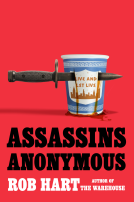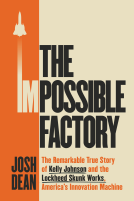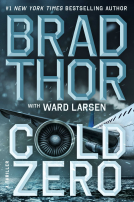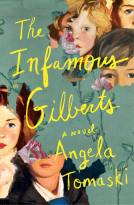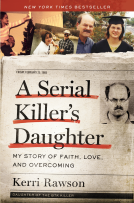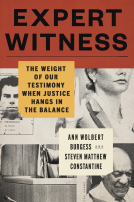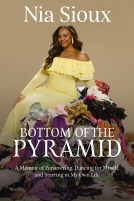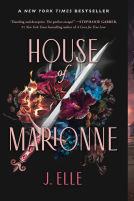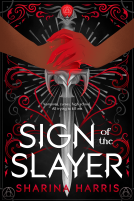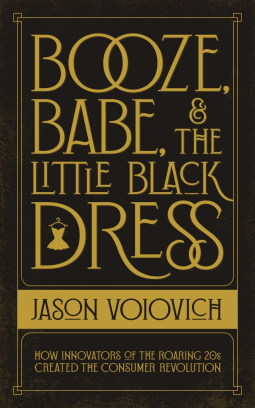
Booze, Babe, and the Little Black Dress
How Innovators of the Roaring 20s Created the Consumer Revolution
by Jason Voiovich
This title was previously available on NetGalley and is now archived.
Send NetGalley books directly to your Kindle or Kindle app
1
To read on a Kindle or Kindle app, please add kindle@netgalley.com as an approved email address to receive files in your Amazon account. Click here for step-by-step instructions.
2
Also find your Kindle email address within your Amazon account, and enter it here.
Pub Date Apr 04 2023 | Archive Date Jul 18 2023
Talking about this book? Use #BoozeBabeandtheLittleBlackDress #NetGalley. More hashtag tips!
Description
Epic stories from the decade that taught Americans how to vote with their wallets.
"The more you read, the less you feel like a sheep in the thrall of Madison Avenue, and more like a tiny, private tycoon bending the market to your whims."
What did Al Capone, Babe Ruth, and Coco Chanel all have in common? Al Capone understood that working men just wanted to enjoy a beer after a long day at work…and that working women wanted exactly the same thing. Babe Ruth understood that people wanted a show, not just a game…even if they would never see him play. Coco Chanel understood that women wanted freedom from tight corsets, flowing gowns, and complex updos…even if (especially if) that meant showing some skin. Each one understood what their customer wanted and found a way to give it to them.
We’ve heard amazing stories like these so often over the past 100 years that they’ve become…well, normal. But that’s only because no one alive today remembers what life was like before the so-called “Roaring 20s” – the most misunderstood decade in American history. Capone, Ruth, and Chanel were indeed unique, but they were not alone. Dozens of innovators used the same approach to systematically change every aspect of our daily lives in a 10-year orgy of societal transformation unknown before or since.
The 1920s ushered in nothing short of a Consumer Revolution – one just as transformative as the Industrial Revolution that preceded it or the Information Revolution that followed. Consumer culture not only changed what we buy and how we buy it, but more important than that, it changed how we see ourselves and our role in society. We’re more than healthcare patients, college students, social advocates, and citizens. We’re consumers…and we demand to be treated as such.
Our world – for good and for ill – would never be the same.
What you can expect in this book:
- Fun, fast-paced, and fascinating stories about colorful characters of the 1920s.
- Learn the origins of everything from frozen food to diaphragms.
- Empower yourself to make better consumer choices...starting today.
This book will help you rediscover your power to change the world!
Advance Praise
"Jason brings 1920s marketing back to life through stories told so compellingly that you want to marinate on each one. History has so much to teach us, and this book nails such a core period - while also being such a fun one to read." Todd Caponi, Author of The Transparency Sale and The Transparent Sales Leader
He’s done it again. Fresh and unique insights often grow out of the intersection of two interesting topics. As with Marketer in Chief, Jason Voiovich demonstrates his mastery of U.S. History and marketing with the deeply researched but fun-to-read Booze, Babe & the Little Black Dress. Voiovich captures, with imagination and great story-telling, the impact of how the “Choice Era,” born in the Roaring Twenties, revolutionized American culture.
— Steve Wehrenberg, retired advertising executive and professor of strategic communication
In “Booze, Babe, and the Little Black Dress,” Jason Voiovich glibly reveals the bones and origins of consumer culture. The colorful characters and funny anecdotes he uses to explain the tectonic plates of modern America isn’t merely fascinating—it’s also strangely empowering. The more you read, the less you feel like a sheep in the thrall of Madison Avenue, and more like a tiny, private tycoon bending the market to your whims.
– Andrew Heaton, comedian and podcaster
"He's like if Will Rogers and Mr. Spock had a baby."
www.mightyheaton.com
Available Editions
| ISBN | 9781737001331 |
| PRICE | $7.99 (USD) |
| PAGES | 477 |
Links
Available on NetGalley
Average rating from 19 members
Featured Reviews
Note: there are two versions of this on Goodreads that I cannot combine: I will review under BOTH of them so my review does not disappear.
Synopsis: (from Netgalley, the provider of the book for me to review)
******************************************************
Epic stories from the decade that taught Americans how to vote with their wallets.
"The more you read, the less you feel like a sheep in the thrall of Madison Avenue, and more like a tiny, private tycoon bending the market to your whims."
What did Al Capone, Babe Ruth, and Coco Chanel all have in common? Al Capone understood that working men just wanted to enjoy a beer after a long day at work…and that working women wanted exactly the same thing. Babe Ruth understood that people wanted a show, not just a game…even if they would never see him play. Coco Chanel understood that women wanted freedom from tight corsets, flowing gowns, and complex updos…even if (especially if) that meant showing some skin. Each one understood what their customer wanted and found a way to give it to them.
We’ve heard amazing stories like these so often over the past 100 years that they’ve become…well, normal. But that’s only because no one alive today remembers what life was like before the so-called “Roaring 20s” – the most misunderstood decade in American history. Capone, Ruth, and Chanel were indeed unique, but they were not alone. Dozens of innovators used the same approach to systematically change every aspect of our daily lives in a 10-year orgy of societal transformation unknown before or since.
The 1920s ushered in nothing short of a Consumer Revolution – one just as transformative as the Industrial Revolution that preceded it or the Information Revolution that followed. Consumer culture not only changed what we buy and how we buy it, but more important than that, it changed how we see ourselves and our role in society. We’re more than healthcare patients, college students, social advocates, and citizens. We’re consumers…and we demand to be treated as such.
Our world – for good and for ill – would never be the same.
What you can expect in this book:
-----------------------------
Fun, fast-paced, and fascinating stories about colourful characters of the 1920s.
Learn the origins of everything from frozen food to diaphragms.
Empower yourself to make better consumer choices...starting today.
This book will help you rediscover your power to change the world!
***********************************************************
LONG BOOK, LONG DESCRIPTION .. wow. I almost don't need to read the book as that is one heck of a synopsis... :-)
At least 100 years ago we were not OVERSHARED AND OVERWHELMED by dumb "influencers" (or as they now prefer "content creators") and their even sillier followers who buy their junk and make them billionaires. The origins of this plight on humanity were well presented and I loved this historical aspect of it although I know that they were using diaphragms in Ancient Egypt and were freezing food naturally in colder climates well before it was a commercial enterprise.
I will recommend this book to all my history-fanatic readers and those interested in consumerism, especially the dark side of it.
Fantastic book - #shortbutsweetreview
 Lori C, Reviewer
Lori C, Reviewer
I love hearing about true history and I simple adore the roaring 20s. This book was very entertaining and interesting. I loved reading this.
I just reviewed Booze, Babe, and the Little Black Dress by Jason Voiovich. #BoozeBabeandtheLittleBlackDress #NetGalley
[NetGalley URL]
 William H, Reviewer
William H, Reviewer
I am very pleased to note that BooksGoSocial has graciously gifted me with an ARC of Jason Voiovich's "Booze, Babe, and the Little Black Dress: How Innovators of the Roaring 20's Created the Consumer Revolution." This text is an absolutely delightful cruise through the Roaring 20's examining the development of the Consumer in the United States. The author, whose background, not surprisingly, is in Marketing, brings us an enlightening and often witty tour de force in the form of a rollicking anecdotal look at the origins of modern consumerism in the 1920's. He examines many well known and lesser known giants of marketing examining, through his own, very distinctive lense
a wide variety of industries and the characters who shaped them. From automobiles to flour and fashions, nothing seems below his notice. I marveled at his ability to synthesize many fairly complex products and ideas and make them readily accessible. As a retired educator, my reaction to this book was much as I react to the finest new documentaries on the History Channel; I would make this book required reading in any American History course. I am certain it would help to reveal the often complex dialectical web that underlies the ideas that have shaped the modern world. Best of all, the author's deft mastery of prose makes it hard to put this book down. I recommend it without reservation. It is a true delight.
 Reviewer 1141272
Reviewer 1141272
Always having found the 1920s as a fascinating period in time, I was quick to pick up Booze, Babe, and the Little Black Dress by Jason Voiovich. How our consumer culture presents today and the correlation to inventions, events, and people in the 1920s is at the heart of this interesting work.
The book is broken up into three sections, each holding a wealth of knowledge about the decade and the new way customers experienced their shopping adventures. Fresh ideas in regards to lending practices made goods more attainable, celebrity endorsements through radio programs now being broadcast to homes across the country inspired shoppers to purchase products, and the invention of the big box store made goods available even in rural communities where they had never been available prior to the twenties.
Voiovich makes a compelling case for the overall theme of the book, which is the influence of the decade on how we shop now. I loved the way the author made these connections between past and present and found the overall book to be quite interesting. I loved how the information was presented with a fair amount of humor which also added the the enjoyability of the piece. Frequent references to previous or upcoming chapters was the only downside I found in his writing. It tended to break up the continuity of the writing and would take me out of where I was at and break my focus.
 Helen W, Reviewer
Helen W, Reviewer
I found this book to be an interesting and informative experience. It made me think about things I just took for granted. Looking back at the 1920s and how it gives us the choices we have today. Short but consistence chapter makes it a very readable book
 Abby S, Reviewer
Abby S, Reviewer
Really well written and engaging.a fascinating informative look at the roaring twenties. So many interesting people and the connection to modern day consumerism was eye opening.#netgalley #booksocial
 Pam C, Educator
Pam C, Educator
This is a great look into the origins of consumer culture. We learn about the roaring 20s and it’s affect on consumerism. This was the decade when mass production, mass finance, and mass marketing really took off. This is the decade that addicted all of us to the shopping experience.
In this book we learn about the origins of mass production of everything from frozen food to diaphragms to mass produced clothing.
We learn about the dark side of consumer culture, including the environmental impacts of mass consumption which has now lead us to fast fashion and over consumption.
A great read if you love history, the 1920s and fashion.
Booze, Babe, and the Little Black Dress: How Innovators of the Roaring 20s Created the Consumer Revolution by Jason Volovich
477 Pages
Publisher: BooksGoSocial
Release Date: April 4, 2023
Nonfiction (Adult), History, Financial, Capitalism, Consumerism, Commercialism, Promotion, Marketing
The book is divided into the following parts.
Part 1: Booze
Manufacturing Desire, The Manipulation Messiah, Flash Food, Cars on Time, Consumer Rebellion, Opening the Big Box, and Housing Feminism
Part 2: Babe
When Advertising Grew a Pair, America’s First Equal Opportunity Employer, Subscribing to Culture, The First District Court of Public Opinion, Happy Feet, Swampland, Changing the Game, Marketer in Chief, Five-Cent Trip to Hell, Mad Women, The Sensemakers
Part 3: The Little Black Dress
Family for Sale, How You Got Your Kicks, All-Natural Ingredients/Artificial People, Democratizing Fashion, Buying a Better You, Capitalism without the Capitalists, “Please can I….”, Five-Star Wonderland
Conclusion: “The Customer Is Always Right”
I was slightly confused when I got this book. For some reason, I thought it was a historical fiction book. I was so wrong. The author takes us through the history of consumerism, capitalism, promotions, and marketing. I learned the ladder of products was originally a concept from GM. He talks about the effect brands and celebrities have on people’s perspective. We use this viewpoint to determine how successful we are.
I felt as if I was in my college marketing course which was a favorite of mine. This is a book everyone should read. The author does an amazing job showing us how the public is led by commercialism. It is well written and easy to understand. Hopefully after reading the book, people will change how they feel about buying stuff.
Booze, Babe, and the Little Black Dress by Jason Voiovich
Are you are obsessed with the Roaring 20's as a I am? Do you gawk at the art deco flourishes on buildings, enjoy looking at pictures from the era, and want to learn as much as possible with this part of the Gilded Age? If so, then this is the book for you.
In Booze, Babe, and the Little Black Dress, author Jason Voiovich takes a look at the various things that people purchased during the time period. After all, the decade that brought Coco Chanel and Al Capone permanently into the history books, as well as the pop culture lexicon, had more to it than just cool architecture, flappers, and speakeasies.
My Thoughts on Booze, Babe, and the Little Black Dress
As a trained historian, the first thing that I look for in a non-fiction, historical book like this is accuracy. This book has that in spades. The sources are legit and the author clearly spent some time researching the topic. His passion for the 1920s show here as well.
Also, if you want a history book that isn't bogged down by weighty prose, extreme details, and paragraphs upon paragraphs of footnotes, then this is a great option. Making history accessible is always a little difficult, but Voiovich pulls it off. The book is easy to read and useful for anyone who wants to learn more about this specific niche of the 1920s.
 Olga N, Reviewer
Olga N, Reviewer
I thank NetGalley and BooksGoSocial for providing me with an ARC copy of this book, which I freely chose to review.
The 1920s have long captured popular imagination. There are books, series, movies, songs, dresses... based on the era, and most people have an image in their heads of what it might have been like. It is an interesting historical period, for sure, coming right after WWI, with people eager to make up for lost time, and with a lot of innovations and changes taking place. It is also a period historians have studied in detail and one that is far away but not so far as to appear totally alien to us. Things were different, but they were starting to look a bit more like what we’re used to. So, people are intrigued, while at the same time having a feeling of familiarity with the people and the society.
So, what does this book add that is new? This probably depends on how much potential readers have researched or learned about the 1920s. The main thing that makes it different is the idea behind it, its thesis. According to the author, Jason T Voiovich, the 1920s and its innovators created the consumer revolution. He postulates that consumer culture is important because it democratised power and put it in the hands of consumers (any consumers, not only those with a lot of money), who, for the first time had access to more choices and could decide how to spend their hard-earned money. He makes a very good case for it, and in the process, writes about a variety of topics and characters, in a very accessible and engaging way.
I don’t want this to turn into a very long list of topics and people, especially because the description is quite clear and gives a good taste of what to expect, but, to give you an idea, you can find information about: prohibition (of course); Babe Ruth (evidently) but also about how baseball became so popular in radio and how radio programmes evolved; Coco Chanel and her little black dress, but also about the evolution of fashion during that era and what flappers were really about; chiropractors and their marketing; Charles Ponzi and other similar schemes; the origin of Credit Unions; the car industry, especially selling cars on credit; the evolution of catalogue shopping; celebrities and how they differ from the ones we see and read about now; election campaigns; frozen foods; marketing (and the role of women in it); the ‘Scopes Monkey Trial’; dancing and music of the era; Betty Crocker...
I am not an expert on the 1920s, so I can’t say how people who have done a lot of research on the subject will feel about this book, but even on the topics I was more familiar with, I confess I learned a lot, and regarding some of the specific topics, I had no idea how things had evolved (or who the people he writes about were). The book is packed with information, including a section on Key People (where one can access a brief biography of the main figures that make an appearance, some unfairly forgotten nowadays), a Further Reading section (organised by chapters) perfect for those who might want to learn more about a specific theme, his acknowledgments, and a hilarious (and self-deprecating) ‘about the author’ write-up. The book also contains many footnotes. Some add factual details to the content or refer to the texts where the information came from, but there are also direct comments from the author, and many of those are amusing. This does not mean the book is not serious in its intent, and as the list of resources and further reading clarifies, the author has done his research and has managed to unearth some pretty rare sources (and he shares the information about those as well).
This is a book that can be read by chapters if people are looking for specific information, but I read the whole book from cover to cover and enjoyed it immensely. There wasn’t anything I didn’t like about the book. My only reflection to those considering buying it would be that, as I only had access to an early ARC copy, I cannot comment on how well or badly the footnotes will work in an e-book format. Perhaps those who think they might use it as a source of research or ideas (and it would be a great one for anybody who wants to learn more about the 1920s, especially the 1920s in the USA, as the book is centred in the United States) should check out the paperback version, but obtaining a sample of the book might clarify matters.
I don’t hesitate in recommending it to people who are not experts on the history of the 1920s in the USA but want to learn more, and anybody who wants to get an idea about how the era was and what changes it brought up, for their own research, writing, or personal enjoyment.
 Reviewer 813329
Reviewer 813329
A very interesting book on what life was like before the roaring twenties. I would thoroughly recommend this book to anyone interested in life in America and what people were thinking and spending their time on.
 Media/Journalist 204870
Media/Journalist 204870
Happy to include this title in The Year in Reading, my annual year-end longread highlighting personal favourite titles for the Books section of Zoomer, Canada’s national culture magazine. (see feature article at link)
Thank you NetGalley for allowing me to receive this book for an honest review.
I found this book interesting on what was like before the roaring twenties.
If you are interested in what life was like in America back then than I suggest you give this one a try.
Readers who liked this book also liked:
Kerri Rawson
Biographies & Memoirs, Parenting, Families, Relationships, True Crime
Julie Colombino-Billingham
Biographies & Memoirs, Business, Leadership, Finance, Nonfiction (Adult)

